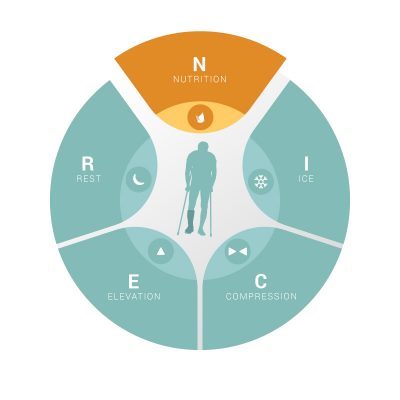When we are injured and visit our doctor, we are provided the old adage “RICE – rest, ice, compression and elevation.” We are taught this young, at our school physical education classes.
While RICE is critical for healing properly, it is missing the concept of nutrition, a core element of ensuring timely and quality recovery.
In the United States, there are more than 65 million musculoskeletal injuries per year that result in a visit to the doctor’s office.
Treating these injuries costs the healthcare system roughly $176 billion annually and results in the loss of an estimated 216 million work days, burdening the economy.
It stands to reason then, that any solution that can either help to prevent or heal injury should be considered as a part of a multimodal approach to improve the quality of life and save our country billions in healthcare costs and lost productivity.
In the developed world, we have a wide range of sophisticated interventions at our disposal, ranging from operative to biological, to treat musculoskeletal injuries. Yet our understanding of one of the most basic and oldest interventions, nutrition, is lacking.
At MEND, we’ve been studying the science of nutrition as it relates to healing and we believe there’s been a missing letter in RICE. We believe nutrition is so important to healing that RICE should be changed to NICER — nutrition, ice, compression, elevation, rest.
 We now know that during a state of trauma, such as injury or surgery, the body’s nutritional needs increase:
We now know that during a state of trauma, such as injury or surgery, the body’s nutritional needs increase:
- The body enters a higher metabolic state and requires more energy
- Trauma and lack of use leads to muscle atrophy, which prolongs recovery
- The immune system is weakened due to stress and shock
- Risk of wound infection is increased
- Persistent inflammation delays return of function
- Trauma and physiological stress lead to increased fatigue
A significant body of scientific evidence has firmly established that nutritional deficiency can compromise healing. In fact, during a state of trauma, your body is in a higher metabolic state and requires more than the average baseline level of nutrients. And targeted nutrients can actually enhance both the quality of healing and the time needed for healing.
We need to make the foundational change of addressing the critical role that nutrition plays in healing and recovery. This is long overdue. It’s time we put the N in RICE and make it NICER.
In the podcast below, integrative medicine expert Ken Roycroft discusses how he’s incorporated nutrition into his protocol with orthopedic patients and the results he’s seeing in their Newport Beach practice.



